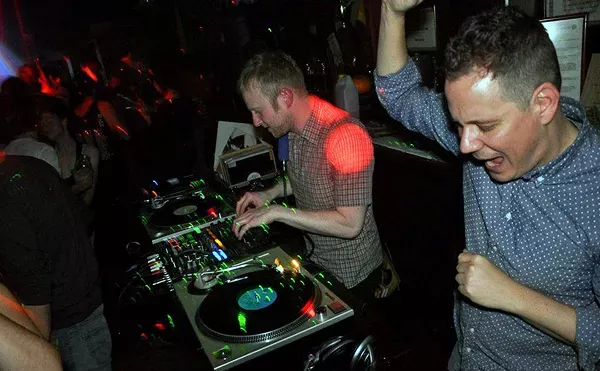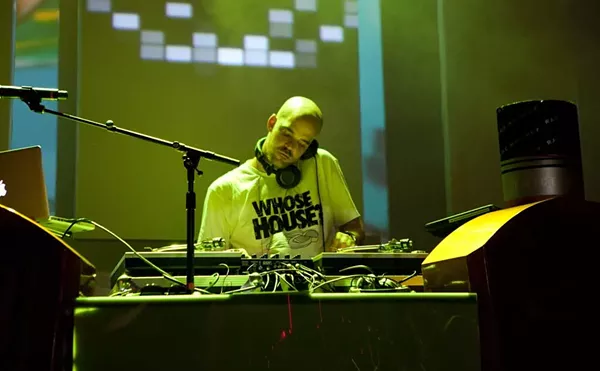It's as hot as one of Ricky Martin's pelvic gyrations and as much discussed as Jennifer Lopez's gravity-defying drape. It's Latin music, and it seems to be everywhere in the music scene these days -- from pop to rock to folk and hip-hop. So much so that last September marked the debut of the Latin Grammy Awards in Los Angeles, hosted by the Latin Academy of Recording Arts & Sciences, a potentially explosive offspring of the national Grammy machine.
How did we get here? Certainly, demographics have played a part, as the Hispanic population has continued to be one of the fastest-growing minorities. But amid the myriad influences, mainstream America's fascination with traditional Latin music definitely peaked after a blues guitarist's fateful trip to Cuba in 1996.
That's when musician and cultural explorer Ry Cooder went to Havana to record some of the island's almost mythical musicians whose careers had ended with the rise of Fidel Castro. The resulting "Buena Vista Social Club" release featured a dazzling array of Cuban son music, a style that combines a folksy blend of jazz instrumentation with African and Spanish rhythms. The album's exotic pastoral vibe and stellar musicianship captured the interest of the National Public Radio crowd as it re-introduced a host of charming musical elder statesmen, like the frisky 90-year-old singer Compay Segundo and vocalist Ibrahim Ferrer (whom Cooder called "the Cuban Nat King Cole"). BVSC won a Grammy in 1997.
By the time filmmaker Wim Wenders returned with Cooder to Cuba in 1998, BVSC had already sold respectably. But when Wenders' beautifully shot complementary documentary of the same name opened in June 1999, the CD's sales soared over 1 million, an amazing number for a largely unpublicized, world-music release on the tiny Nonesuch label.
Since then, the aged Buena Vista Social Club has become a musical phenomenon, and a side group called the Afro-Cuban All Stars continues the magic, having released two albums. They are currently on tour, with an April 14 stop at House of Blues. In addition, no less than three singers from the original BVSC -- Ferrer, Eliades Ochoa and Omara Portuando -- have all released successful solo albums.
Still, that's only one thread of the vast tapestry of Latin musical heritage. Which leads to a current record-buying dilemma for those just picking up the Latin beat. The array of offerings is dizzying, but you have to jump in someplace. So here are recommendations for four spanking-new entries that continue the exploration of traditional Latin roots.
If you're looking for a worthy follow-up to "Buena Vista Social Club," Soneros De Verdad's A Buena Vista: Barrio de la Habana is a solid choice. To pay homage to the Buena Vista barrio and the work of the great Cuban "tres" player Juan de Marcos Gonzales, "son" singer Luis Frank gathered another group of talented Cuban musicians to record in the Miramar district of Havana. This group includes old masters like "montuno" singer Pio Leyva and vocalist Rudy Calzado playing alongside "tres" players like Jose Castaneda. The result is a collection of terrific "son" music that further extends Cuba's legacy. Frank, the relatively young vocalist who sings in the style of Beny More, shines as his mellow tenor floats above the traditional sons, boleros and the more bluesy "guajiras." Overall, though, the material, which includes contemporary tunes, isn't as timeless as the selections on BVSC.
Before they were winning Grammys for their Tex-Mex rock & roll, Los Lobos was four "Mexicanos" from Garfield High in East L.A. The 1978 Spanish-language Los Lobos Del Este de Los Angeles (not to be confused with the band's similarly named box set) was Los Lobos' first recording, previously only available as an LP (a difficult-to-find collector's item) and now rereleased on CD. The landmark runs the gamut of Cuban and Mexican musical styles from "sons" to aching "boleros." The acoustic sound is fairly simple compared to the mature and polished style Los Lobos has since perfected, but the musicianship is exquisite, with David Hildago showing a mastery over numerous song styles. Imbued with the same good-time vibe of Los Lobos' later works, this Hollywood Records gem will not disappoint fans or newcomers.
If the beat's the thing, then look no farther than the excellent Latin Beats: A Tribute to Tito Puente, on which contemporary artists do proper justice to the legacy of the irrepressible and beloved Latin-music giant who passed away last year. Released on the U.K. Latin label Mr. Bongo, "Latin Beats," a celebration of the dancier side of Latin folk, covers every kind of rhythm from the samba to Puente's classic brand of party salsa. Sabu Martinez's "Hotel Alyssa Soussie" is a carefree opener that sets the pace with some thunderous drum beats and horns. The legendary Cuban dance band Los Van Van does a tasty "Llegue Llegue," while Nuyorican Soul washes Puente's beats in a bit of house music on "Nervous Mix." There are a few choice selections from the master himself, including the classic "Oye Como Va" that Carlos Santana made famous in the '70s.
The cuts on The Devil's Swing: Ballads From the Big Band Country of the Texas-Mexican Border might sound a lot like the kind of traditional Tejano tunes you hear at an authentic Mexican restaurant. But the subject matter is far heavier. These 19 performances were recorded during the making of the documentary film "The Devil's Swing," which examines the volatile and isolated region where the Rio Grande and the Rio Conchos join. The area is one of the few remaining homes of the traditional "corrido" or ballad style, distinguished by aching harmonies, pulsing bass and accordion, and an occasional horn. Read the bilingual lyrics and the dark side of these songs emerges. The musical tellings of cattle drives, border conflicts, heroes of the Mexican Revolution and, above all, the recent hardships from the drug trafficking along the border fill these songs with passion and dark energy that belie their soulful delivery.
Todd Deery writes for the Orlando Weekly, where this feature first appeared. E-mail [email protected]





